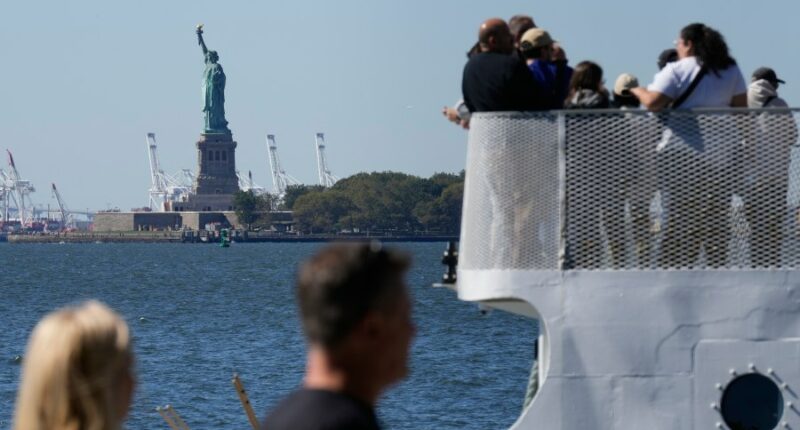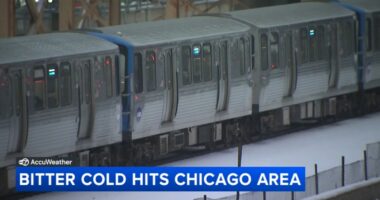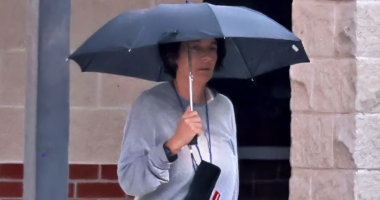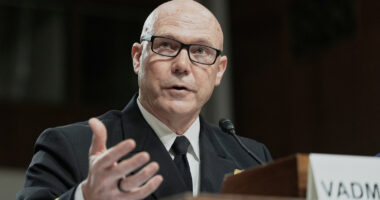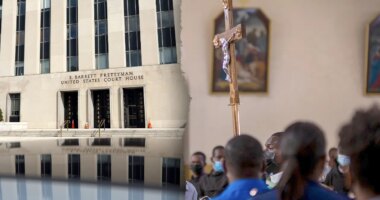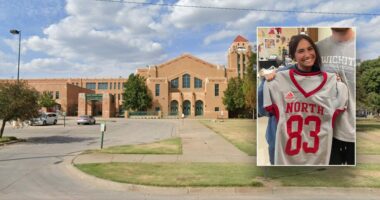Share this @internewscast.com

NEW YORK (AP) — A sizable crowd boarded boats to explore the Statue of Liberty and Ellis Island on Wednesday morning, showing no immediate signs of the government shutdown that is leading to about two-thirds of National Park Service employees being furloughed.
However, in Philadelphia, the cradle of American independence, tourists enjoying a brisk autumn morning at Independence Mall were disappointed in their attempts to see the Liberty Bell. They were turned away at the entrance and could only catch glimpses of it through a glass pavilion.
The start of the shutdown created a patchwork of accessibility across over 400 sites managed by the National Park Service, as reported by The Associated Press. Some visitors were frustrated by the reduced services available, while others seemed unaware of any changes or continued their visits regardless.
According to a shutdown contingency plan released by the park service late Tuesday, “park roads, lookouts, trails, and open-air memorials will generally remain accessible to visitors.” However, due to significantly reduced staffing, parks without “accessible areas” will be closed during the shutdown, and those currently open might close if park resources are damaged or if trash accumulates, as stated in the plan.
Amid limited information on official government websites, questions were being raised on park service social media platforms on Wednesday. People wondered if camping permits would remain valid at locations like Chaco Culture National Historical Park in northwestern New Mexico and if the entrances would be open at Rocky Mountain National Park in Colorado.
Almost 9,300 park employees furloughed
Due to the widespread furloughs, parks that remain open are only able to offer limited services that include protection of life, property, and public safety, according to the plan.
At Acadia National Park in Maine, would-be hikers in search of trail maps found empty receptacles outside a closed visitor center. With no park rangers in sight, Jim Feather of Elizabethtown, Pennsylvania, said he and his wife were unsure about tackling Cadillac Mountain, with its panoramic views of the North Atlantic coast.
“It’s frustrating that they’re playing politics in D.C.,” Feather said. “Their job is to pass a budget.”
In Mississippi, the state’s most-visited cultural attraction, Vicksburg National Military Park, was shut down. A nonprofit group was trying to work out an agreement to reopen it using donated money to pay for staff.
There was no access to the caves or evening bat flights at Carlsbad Caverns in southern New Mexico because roads into the park were closed.
In Florida’s Everglades, tourists from Switzerland who encountered a blocked road decided to put on packs and hike into the park. “For us, it’s kind of special,” Andy Jeker said of being able to visit national parks in the U.S., pointing to their vastness and connection with nature.
The plan did not specify which of the service’s sites are considered inaccessible. The Associated Press requested further details in emails and a telephone call to officials with the National Park Service and Department of Interior on Tuesday and Wednesday.
The park service oversees large national parks such as Yellowstone and Grand Canyon, national battlefields, national monuments such as the Statue of Liberty and historic sites including Independence National Historical Park, home of the Liberty Bell.
Bill Wade with the Association of National Park Rangers, an advocacy group for park employees, said a shutdown means park workers must figure out how to pay bills while they go without pay.
“It’s just a really bad situation for everyone,” Wade said, noting that people will be visiting parks to see fall foliage.
Donations to keep parks open
Many national parks stayed open during a five-week shutdown in Trump’s first term. Limited staffing led to vandalism, overflowing garbage, damage to natural resources and illegal off-roading.
A group of 40 former National Park Service superintendents had urged the Trump administration to close the parks during a shutdown to prevent a repeat of the damage that occurred in 2018 and 2019. They warned a shutdown now could be even worse with parks already under strain from a 24% staff cut and severe budget reductions.
During a 2013 shutdown, the park service under former President Barack Obama turned away millions of visitors, leading to more than $500 million in lost spending. It also caused economic damage to gateway communities that border national parks and depend on their visitors.
The contingency plan allows parks to enter into agreements with states, tribes or local governments willing to make donations to keep national park sites open.
Utah agreed to donate $1.7 million in 2013 to keep its national parks open. Arizona, Colorado, New York, South Dakota and Tennessee have also donated money to keep parks staffed during shutdowns.
Colorado’s governor suggested the state could do that again this time for Rocky Mountain National Park. But a spokesperson for the governor of Arizona said last week that it cannot afford to pay to keep open its national parks that include the Grand Canyon.
_
Brown reported from Billings, Montana and Montoya Bryan reported from Albuquerque. With contributions from Matt Rourke in Philadelphia, Robert F. Bukaty in Acadia National Park, Maine and Sophie Bates in Jackson, Mississippi.
